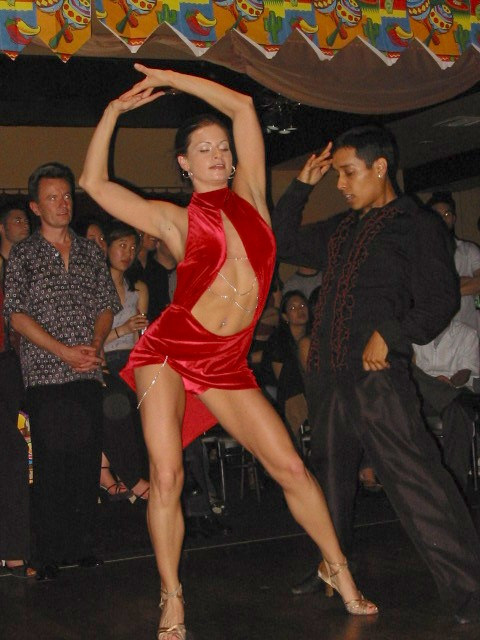One has to wonder if becoming mainstream has had a positive influence on the dance genre of New York Style Salsa. Becoming mainstream increases the popularity of the style making it more available, visible and prevalent in the public eye, but what is our public seeing and learning about New York Style Salsa through this mainstream view point and interpretation? One has to ask themselves, are we only growing our dance in numbers and popularity while leaving the soul of the dance behind? Does mainstream mean that we come to generalize the dance instead of creating a more definitive connection to our style of dance through sharing it with the public?
The Influence of Ballet Training For Salsa Dancers
The sad truth is that while some dance companies still hold true to the essence of the New York Style, the mainstream of the New York Style has become an avenue for reaching mediocrity and blending with the whole, a sharp detour from the roots of the dance almost to the point of non-recognition. With Salsa instructors imposing Ballet warm-ups, postures and interpretation in performance, teaching with the inclination and intention of other styles outside New York Style Salsa, New York Style Salsa, affectionately known as Club Style Salsa, has turned the corner with it’s nose in the air and snubbed the earthy, gritty quality that once set it apart from other styles of Salsa dance and once made it unique to New York City and it’s predecessor – the Mambo.
Certain companies and one in particular, have made it trendy to impose fitness guru instruction and ballet warm ups as the staple of the mission to flatten, dumb down and “mainstream” the dance and have served to prove that even with all the conditioning in the world one can’t use those techniques to dance New York Style Salsa with feeling and soul or dance at all with any relation to New York Style. In fact, the same company instead uses every style of dance but Salsa to get an audience’s approval to tap into the familiar and market it as New York Style Salsa.
Disconnecting From Salsa To Connect To The Mainstream
By using mainstream forms of dance to train their students, they have entered the BADLANDS** of Dance, having no direct or relative connection to New York Style Salsa whatsoever, resulting in over accenting the dance in jerky movement and stark postures which flatten the dance and bare little resemblance to New York Style Salsa. Socially these methods translate on the social dance floor as “shine” choreography from their latest dance class, a monotonous routine, sucking the life out of the dance and creating predictability in a dance style originally built on a synchopated nature of abandonment and the ultimate element of surprise.
New York Style Salsa Is More Than A Number
While people see New York Style Salsa as “Breaking On2” and make reference to it in that fashion because the break step lands on the 2nd beat of the measure, we have lost the connection to the gritty feeling of the club style that emanated from the Mambo Era and the days of the Palladium and which sits at the root and base of the New York Style. Modern day mainstream Salsa fails to realize that New York Style Salsa is called New York Style Salsa because of its connection to the Mambo’s upspring in the Palladium and the Big Band Era of the 1940s and the pulse and drive of the music that created a certain overall feeling synonymous with the New York Style. Mambo is a specific driving rhythm, one rhythm under the umbrella of the term Salsa, indivisible with LIBERTY and justice for ALL – this is our New York Style and those who truly dance it, know it.
So my review of New York Style Salsa hitting the mainstream is, well, not as sizzling as I’ve known it. It is unfortunate that we in the New York Style Salsa scene have allowed the fancy advertising, bling and fancy terminology of mainstream to sell us out.

**"The term "badlands" represents a consensus in North America: the Lakota called the topography "mako sika" and Spanish colonists called it malpaís, both literally bad land, while French trappers called it "les mauvaises terres à traverser" - "the bad lands to cross". The term is also apt: badlands contain steep slopes, loose dry soil, slick clay, and deep sand, all of which impede travel and other uses. Badlands form in arid regions with infrequent but intense rain-showers, sparse vegetation, and soft sediments: a recipe for massive erosion."
Video About the Palladium - History of New York Salsa & Its Roots
https://www.youtube.com/watch?v=NqROZERU7Qc&feature=player_embedded


